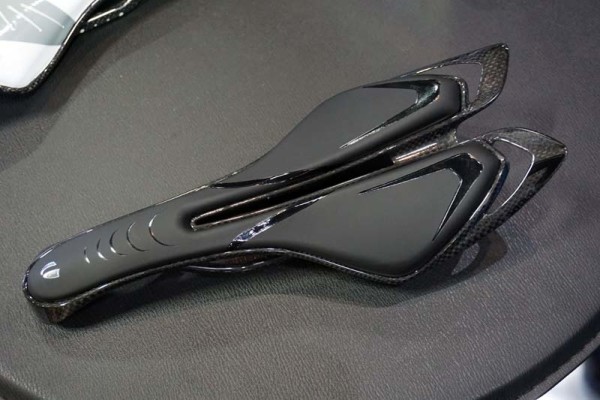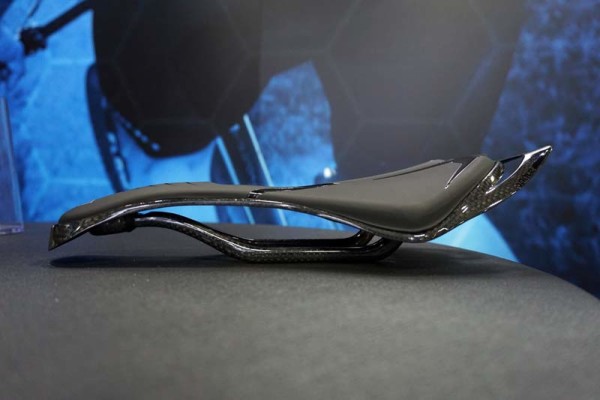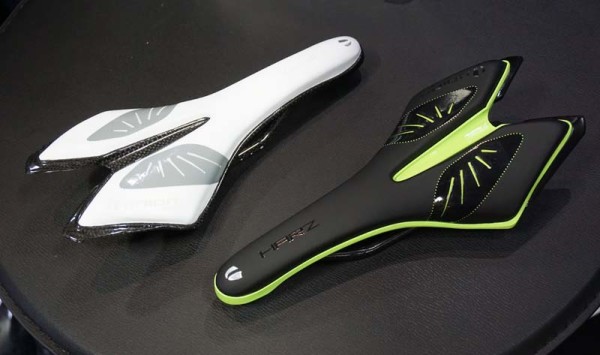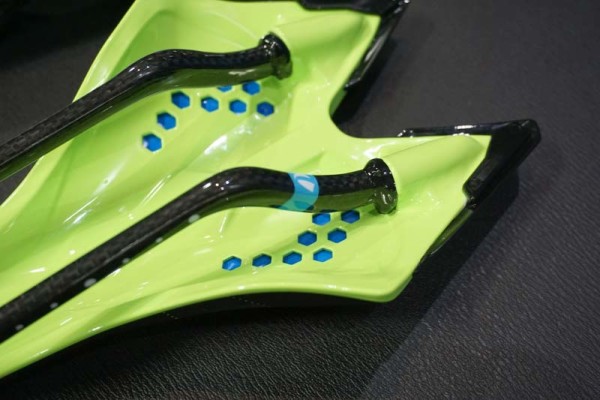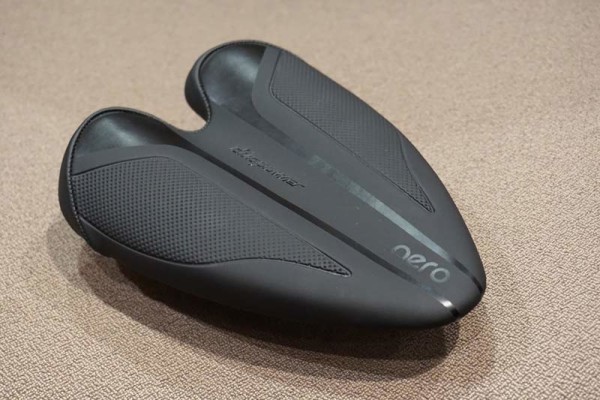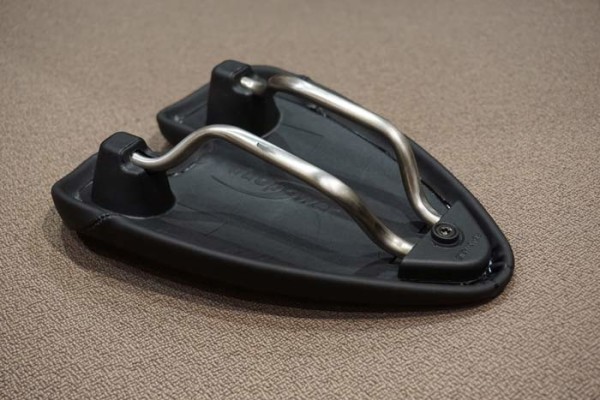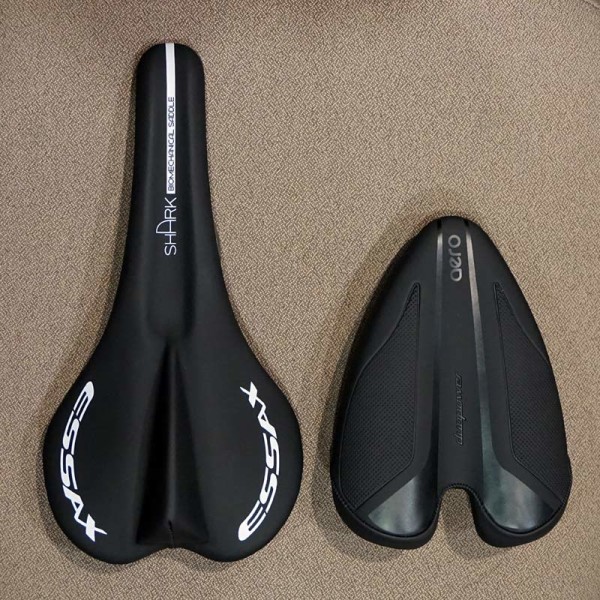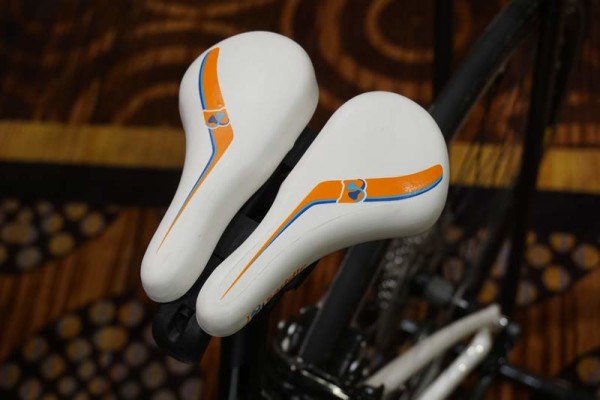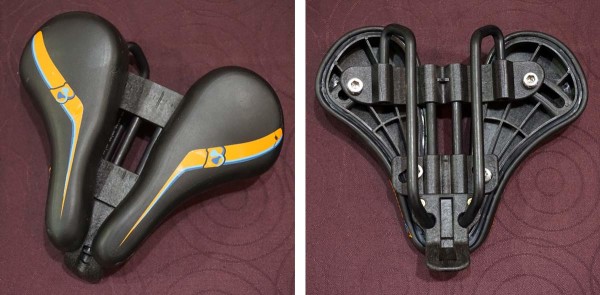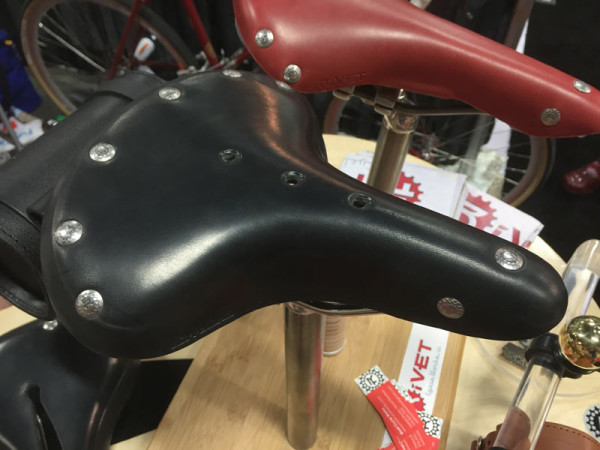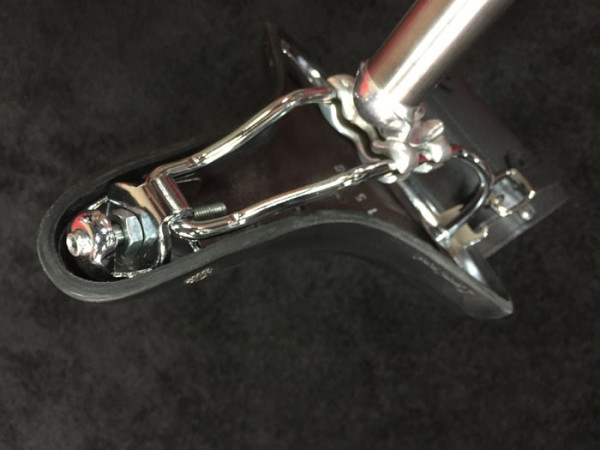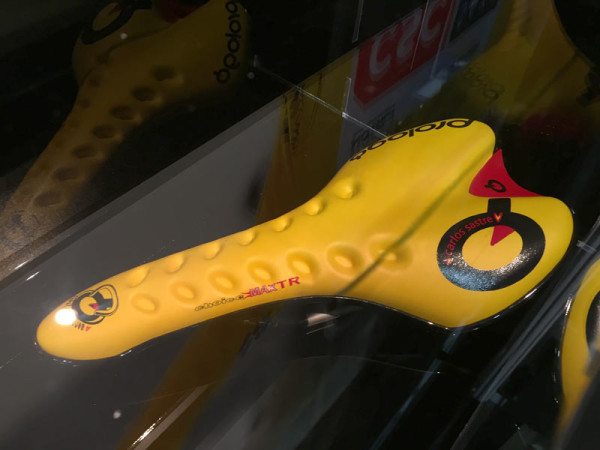Union Sport debuted their striking saddle line, featuring a composited layering of materials to provide flex where it’s needed while still supporting the rider, particularly when it’s time to lay down the power.
Two models are on tap, the Saale, shown above with its carbon “Klammer” wings, and the Harz, which is slightly more subdued in looks but still every bit as high tech. Three versions of each are offered, with the top of the line getting a full carbon composite shell, a mid-level with carbon/polycarbonate and a base level with polyurethane. All use a lightweight foam padding over gel inserts under the sit bones, and the top two add perforations in the shell to improve flex characteristics.
Klammer, er, clamber past the break for more info and a look at new saddles from Rivet, BiSaddle and Essax, too…
The Saale is the road saddle, shaped to help put all of the rider’s energy into forward motion.
The top versions of each saddle used a full carbon rail and shell. The Klammer tail provides tactile feedback to your rear end, letting you know when you’re pushing hard against the edge during seated power sessions, but they claim it’s no encumbrance when trying to dismount (think cyclocross). We tried reaching out for a better explanation, but no one seems to be at home parent company Marwi USA home by email, cell or landline.
The Harz is the other saddle, aimed more at mountain bikers. The tail points are extended, but solid, with padding all the way back.
Check them out at Union-Sport.com.
Remember the Essax Shark saddle? It debuted in 2014 with the goal of keeping you centered on the saddle. With no effort required to keep yourself symmetrical on the bike, your body could maintain even pressure on each sit bone and the surrounding nerves. Now, they’ve got a new saddle that looks almost as unique:
Created as a sister brand, the Duopower saddles do away with the nose of the saddle and drops the center section to eliminate any uretal/vulvar pressure.
They’re made to support the sit bones but eliminate soreness and pressure anywhere else. Designs are available for aero (TT/triathlon), road, mountain and urban bikes. The Road and Aero (shown) models have a mostly flat surface. The mountain bike models get a slight kick upward at the tail for better power positioning on the climbs, with a more aggressive model adding a bit of shaping to the profile. The urban models get a bit more padding and also kick up at the tail.
Weights range from 170g for the performance models up to 225g for the freeride and urban saddles. Like the Essax saddles, they’re handmade in Spain.
The BiSaddle Da Vinci aims to be the last saddle you and the rest of your family ever needs. It has six ways of adjustment, swappable covers to match everyone’s color preferences, and a modular foam system so you can choose between soft, medium and firm.
Each half of the saddle has independent front and rear width adjustments, making up the first four methods of personalization. Then, you can independently adjust the angle of each half (sloping from center to side of saddle), and the fore-aft position.
They even have an add-on transition hook so you can quickly and easily rest your bike on the rack during a triathlon. The completely open center channel claims to eliminate soreness, numbness and pressure, and the rest of the design lets you tailor it to your specific anatomy. There’s a choice of heavy duty steel (425-485g) or lighter weight alloy (260-360g) rails, the latter offering rails in five different colors (silver, black, red, purple and gold). They come with a lifetime warranty, are made in the USA and retail for $279 to $299.
Rivet Cycle Works introduced the Loveland, a leather saddle designed for your townie. With many commuter bikes putting you in a more upright riding position, and with many commuters spending only small snippets of time on those bikes, they were able to shape the saddle for more comfort on those types of rides. It’s still a full leather cover, with rivets, but at $110, the price is much lower than their performance and all-day saddles (which we’re testing for the long term, first impressions here).
It features their adjustable tension design fitted into chromoly rails. Saddle bag loops are standard equipment, too. Weight is 726g, dimensions are 250L x 200W x 70H. It includes a saddle cover and allen wrench to adjust the tension.
We covered Prologo’s new saddles and bar tape at Eurobike, but they had a bit of a retrospective on display at Interbike. This one, called Choice, was one of their first saddles and let you customize the padding and cover colors, making it adaptable to anyone and any type of riding, road or mountain. It debuted in 2007 and Carlos Sastre took the the 2008 Tour de France win on it.
